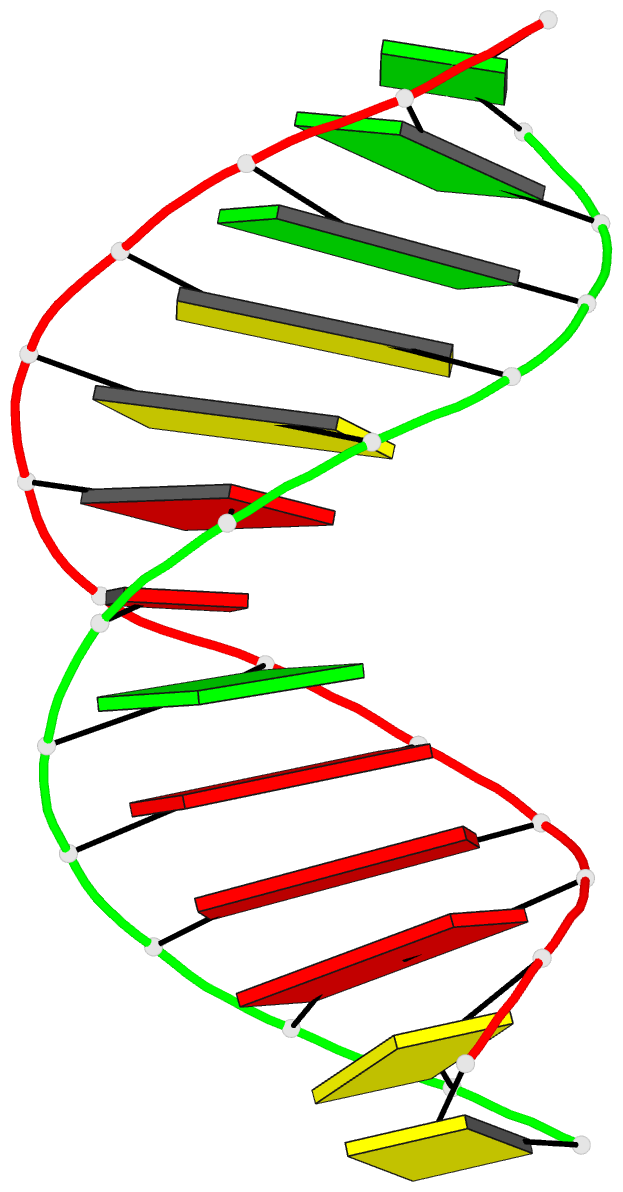Summary information and primary citation
- PDB-id
- 2hss; DSSR-derived features in text and JSON formats
- Class
- DNA
- Method
- NMR
- Summary
- 13mer duplex DNA containg an abasic site with beta anomer, averaged structure
- Reference
- Chen J, Dupradeau FY, Case DA, Turner CJ, Stubbe J (2007): "Nuclear magnetic resonance structural studies and molecular modeling of duplex DNA containing normal and 4'-oxidized abasic sites." Biochemistry, 46, 3096-3107. doi: 10.1021/bi6024269.
- Abstract
- A 4'-oxidized abasic site (X) has been synthesized in a defined duplex DNA sequence, 5'-d(CCAAAGXACCGGG)-3'/3'-d(GGTTTCATGGCCC)-5' (1). Its structure has been determined by two-dimensional NMR methods, molecular modeling, and molecular dynamics simulations. 1 is globally B-form with the base (A) opposite X intrahelical and well-stacked. Only the alpha anomer of X is observed, and the abasic site deoxyribose is largely intrahelical. These results are compared with a normal abasic site (Y) in the same sequence context (2). Y is composed of a 60:40 mixture of alpha and beta anomers (2alpha and 2beta). In both 2alpha and 2beta, the base (A) opposite Y is intrahelical and well-stacked and the abasic site deoxyribose is predominantly extrahelical, consistent with the reported structures of the normal abasic site in a similar sequence context [Hoehn, S. T., Turner, C. J., and Stubbe, J. (2001) Nucleic Acids Res. 29, 3413-3423]. Molecular dynamics simulations reveal that the normal abasic site appears to be conformationally more flexible than the 4'-oxidized abasic site. The importance of the structure and flexibility of the abasic site in the recognition by the DNA repair enzyme Ape1 is discussed.





